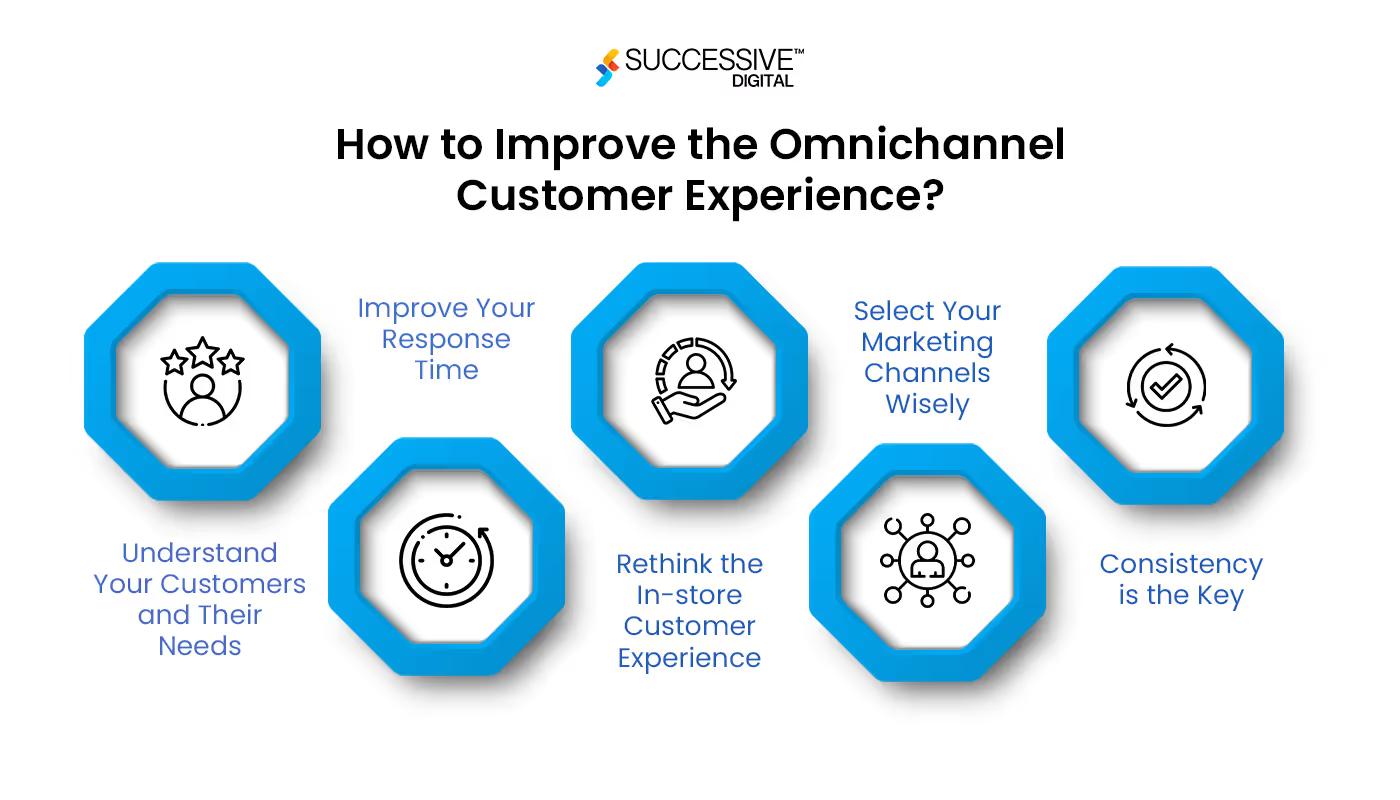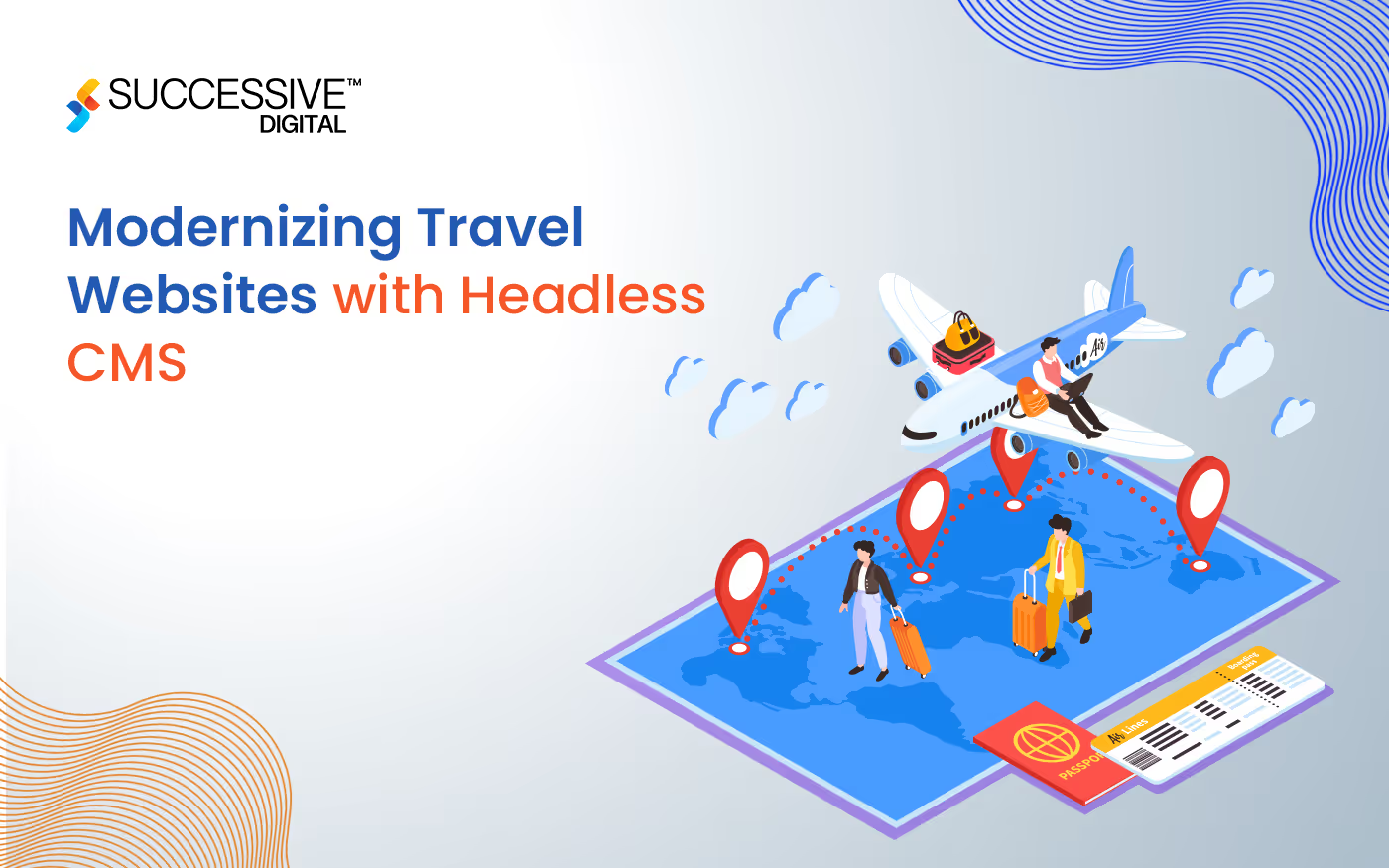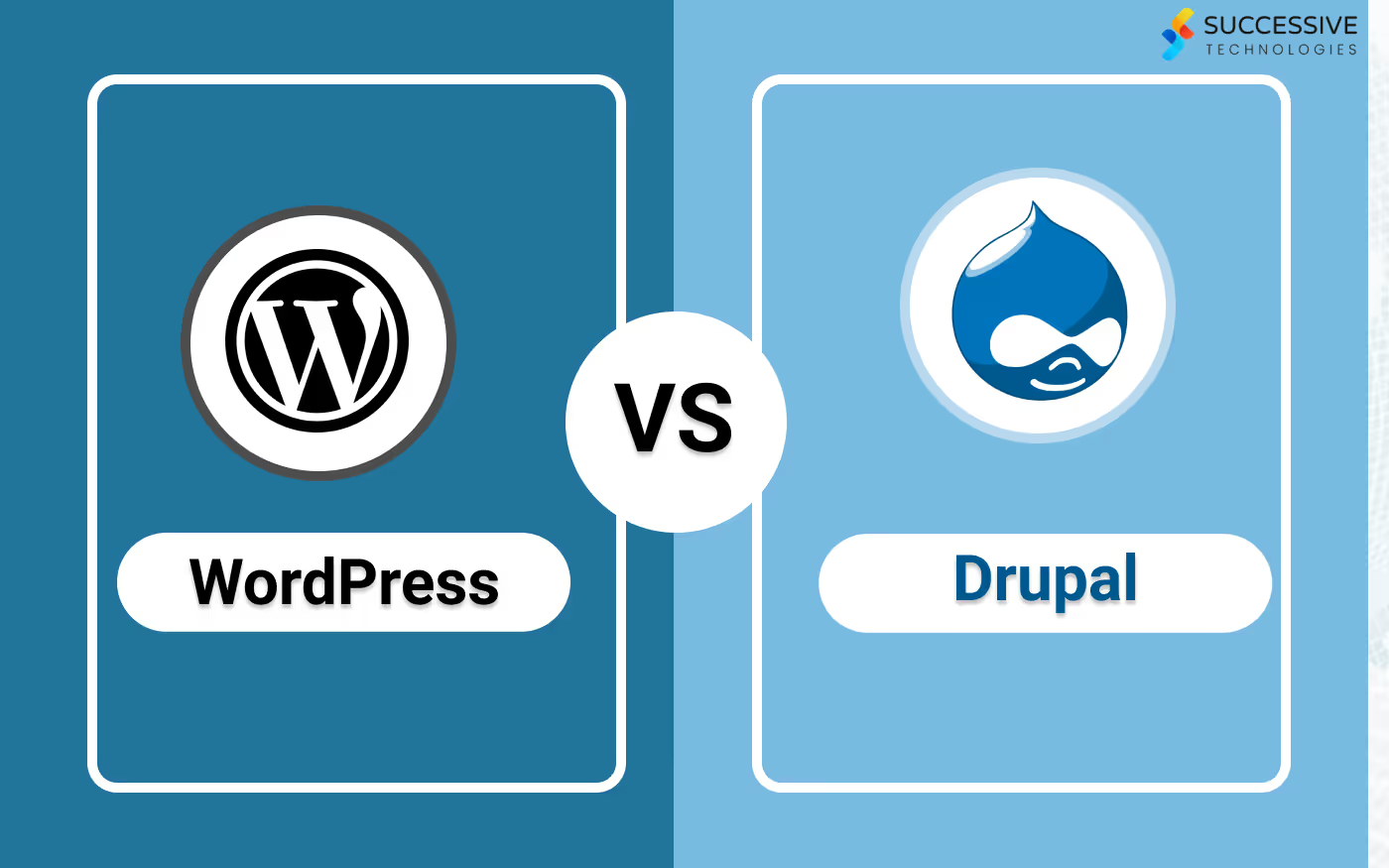Personalization in customer experience (CX) has emerged as an essential strategy for large enterprises seeking to build robust customer connections. As the online landscape evolves, companies need to recognize personalization as a vital component to use in all touchpoints of a customer journey. This comprehensive blog explores the various aspects of personalization in enterprise CX for large brands, delves into the complex situations they face, and suggests strategies to make it a success.
The Imperative of Personalization in CX

- Shifting Consumer Expectations:
Consumers count on customized experiences tailored to their preferences and desires in the dominant landscape of online world.
- Competitive Edge for Large Companies:
Personalization is no more a differentiating factor; It is now necessary. Large enterprises that have mastered the art of personalization reap the benefits of competitive edge and enhance the loyalty of their customers.
The Scale Challenge for Large Enterprises
- Scope and Complexity:
Applying personalization strategies to the product design of larger organizations will include addressing many challenges, from information management to technology integration.
- Balancing Automation and Human Touch:
Striking a balance between automation and maintaining human interaction is essential to producing customized experiences.
The Challenges of Personalization at Scale
Data Management and Integration
- Vast Data Ecosystems:
Large enterprises often operate with broader account ecosystems, managing dynamic customer engagement data and controlling user account security is difficult.
- Ensuring Data Accuracy and Consistency:
Accurate and consistent customer records across systems and touchpoints are one of the major challenges to successful CX.
Technological Infrastructure
- Legacy Systems and Integration Issues:
Many large enterprises struggle to deal with legacy systems that are not capable to integrate sophisticated personalization tools and latest technologies.
- Scalability Concerns:
Ensuring that personalization efforts can scale as business growth evolves presents a technical barrier when dealing with legacy infrastructure.
Privacy and Ethical Considerations
- Data Privacy Regulations:
Complying with evolving data privacy laws requires a careful balancing act to provide customized research while respecting client privacy.
- Ethical Use of Data:
Maintaining trust with consumers requires ethical considerations while collecting and using personal information for business purposes.
Overcoming the "Creep" Factor"
- The Balance:
Avoiding the perception of over-involvement requires a balance between providing personal information and respecting client limitations.
- Transparency in Personalization:
Transparent communication with users would enable personalization strategies to reduce risk and build recognition of authenticity.
Strategies for Effective Personalization at Scale
Unified Customer Profiles
- A 360-degree view of the customer:
An integrated consumer profile that collects data from multiple touchpoints enables comprehensive knowledge about consumer choices.
- AI-Powered Customer Insights:
Using artificial intelligence (AI) to analyze large amounts of data yields insights that can be utilized to create personalized experiences as part of innovative personalization strategies.
Advanced Segmentation
- Dynamic and Real-Time Segmentation:
Moving beyond static segmentation, large companies can use real-time statistics to segment customers dynamically based entirely on their modern customer engagement channels and choices.
- Behavioral and Predictive Segmentation:
By combining behavioral and predictive segmentation, companies can anticipate customer desires and deliver personalized experiences is whole new way.
Embracing AI and Machine Learning
- Personal Recommendations:
AI and machine learning algorithms assist personalized recommendations, enhancing product or content discovery for consumers.
- Predictive Personalization:
Enterprise CX is all about anticipating buyer actions and preferences through predictive personalization that complements proactive engagement and optimization.
Omnichannel Consistency

- Seamless Cross-Channel Experiences:
Ensuring that the customer experience is consistent across all virtual and physical channels such personalization strategies contribute to an integrated customer journey.
- Integration of In-Store and Online Personalization:
For businesses with traditional brick-and-mortar set-up, combining in-store and online personalization efforts creates a unified customer experience that goes a long way to give better customer engagement outcomes.
Adaptive Content Strategies
- Dynamic Content Delivery:
Adopting adaptive content strategies allows large businesses to provide content that changes dynamically based primarily on individual user needs. Present day advanced CMS support multi-language and dynamic content discovery.
- Personalized Messaging and Communication:
Tailoring conversational messages to customer expectations creates engagement and conviction that resonate human touch.
Continuous Testing and Optimization
- Iterative Testing:
Implementing a lifecycle of continuous analytics enables organizations to tailor personalization strategies based on both real-time feedback and operational data.
- Agile Responses to Customer Feedback:
Quick answers to customer feedback, combined with rapid iterations, ensure that CX efforts execute in line with personalization strategies.
Examples of Successful Personalization
- Adidas: Tailoring Product Recommendations
Adidas, the global leader in sportwear, uses personal elements to enhance interest in online shopping. By reading consumer choices and purchase records and engaging with a wide range of products, Adidas recommends customized product brand displays. This approach facilitates enhanced enterprise CX approach via online shopping and introduces new products to customers that match their capabilities. The result is an engaging and customized e-business experience, which helps increase customer satisfaction and symbolic loyalty.
- Sephora: Customizing Beauty Recommendations
Sephora, a beauty, and cosmetics retailer, employs personalization to cater to individual beauty preferences. Sephora tracks customers' existing purchases, their information, product searches, and choices through its Beauty Insider application and online platform. Through personalized skincare routines and guided DIY suggestions, Sephora's approach enhances the overall shopping experience for beauty enthusiasts.
- Starbucks: Personalizing the In-Store Experience
Starbucks, with its mobile app and loyalty application, is an example of how large organizations can optimize the checkout experience. The mobile application allows customers to customize and see orders, ensuring consistent and convenient satisfaction with in-store pickup. Combining personalized content with rewards based on preferred behavior supports customer loyalty and encourages repeat visits. Starbucks strategically merges the digital and physical worlds, enhancing an integrated and customized customer engagement.
- Spotify: Dynamic Playlists and Discovery
Spotify goes beyond static playlists by using dynamic and custom playlists tailored to individual prospects and listening habits. Daily Mix and Discover Weekly are examples of Spotify's commitment to subscribers using many shiny, personalized products. By constantly adapting to the changing tastes of its users, Spotify keeps its target audience engaged and happy, and it shows the potential available by personalization in the space of music streaming.
- Airbnb: Personalized Travel Recommendations
Airbnb uses personalization to optimize the tourism experience for customers. By searching beyond bookings, options, and stored listings, Airbnb informs personalized recommendations. It encompasses customized product recommendations, destination insights, and travel experiences tailored to the user’s preferences, improving a more personalized and engaging travel planning approach and customer engagement.
- YouTube: Personalized Video Recommendations
YouTube uses sophisticated algorithms to optimize video recommendations for each user. By analysing watch history, likes, and subscriptions, YouTube recommends movies that match users' interests. This personalized approach keeps users engaged with the platform and contributes to long-term viewing.
Measuring the Impact of Personalization
Key Performance Indicators (KPIs)
- Conversion Rates:
Track how personalization impacted conversion rates and offered the business required insights into the effectiveness of personalization strategies.
- Customer Satisfaction Scores:
Monitoring customer satisfaction scores helps gauge the overall impact of personalization on the customer experience.
Customer Lifetime Value (CLV)
- Long-Term Impact:
Assessing the effect of personalization on customer lifetime value gives a complete view of its price over time.
- Retention Rates:
Analyzing customer retention prices facilitates measuring the effectiveness of personalization in fostering long-term consumer relationships.
Future Trends in Personalization
Hyper-Personalization with AI
- Individual-Level Personalization:
Advances in AI will enable teams to move towards individual level personalization, which caters to each customer’s unique choices.
- AI-Generated Personalized Content:
AI-powered content creation plays a vital role in tailoring personalized products relevant to individual customers.
Augmented Reality Integration.
- Virtual Try-on and Experiences:
The integration of AR will undoubtedly allow consumers to try products or experience services in a personalized virtual environment.
- Enhanced In-store Personalization:
The advantage of AR is that it delivers personalized information and guidelines based primarily on customer expectations in physical stores.
Privacy-first Personalization
- Permission-Based Personalization:
Companies increasingly take a predominantly permission-based approach, seeking customer approval before delivering personalized experiences.
- Blockchain for Data Security:
Exploring blockchain technology to enhance data security and transparency in personalization efforts.
Mastering Personalization for Large Companies
- A Strategic Imperative:
Personalization strategies are not merely a function but a transformative imperative for large organizations trying to thrive in the digital age.
- Continuous Evolution:
The competitive space of personalization is ever-evolving, requiring big brands to adopt an agile approach and constantly innovate.
The Path Forward
- Balancing Scale and Personalization:
Large enterprises must navigate a balancing scale while ensuring that personalization efforts remain agile, adaptive, and customer-centric.
- A Customer-Centric Future:
As the era of enterprise CX advances, large corporations prioritizing a customer-centric approach to personalization will forge more confident relations with their target market and stay in the competitive landscape.The journey toward learning personalization at the scale of large organizations is complicated but essential. By addressing challenges head-on and imposing powerful techniques, companies not just effectively meet; however, they can exceed customer expectations, developing personalized experiences that resonate human touch. The future of personalization is dynamic and promising, providing unheard-of possibilities for large organizations to raise their customer engagement to new heights.
.avif)










.jpg)









